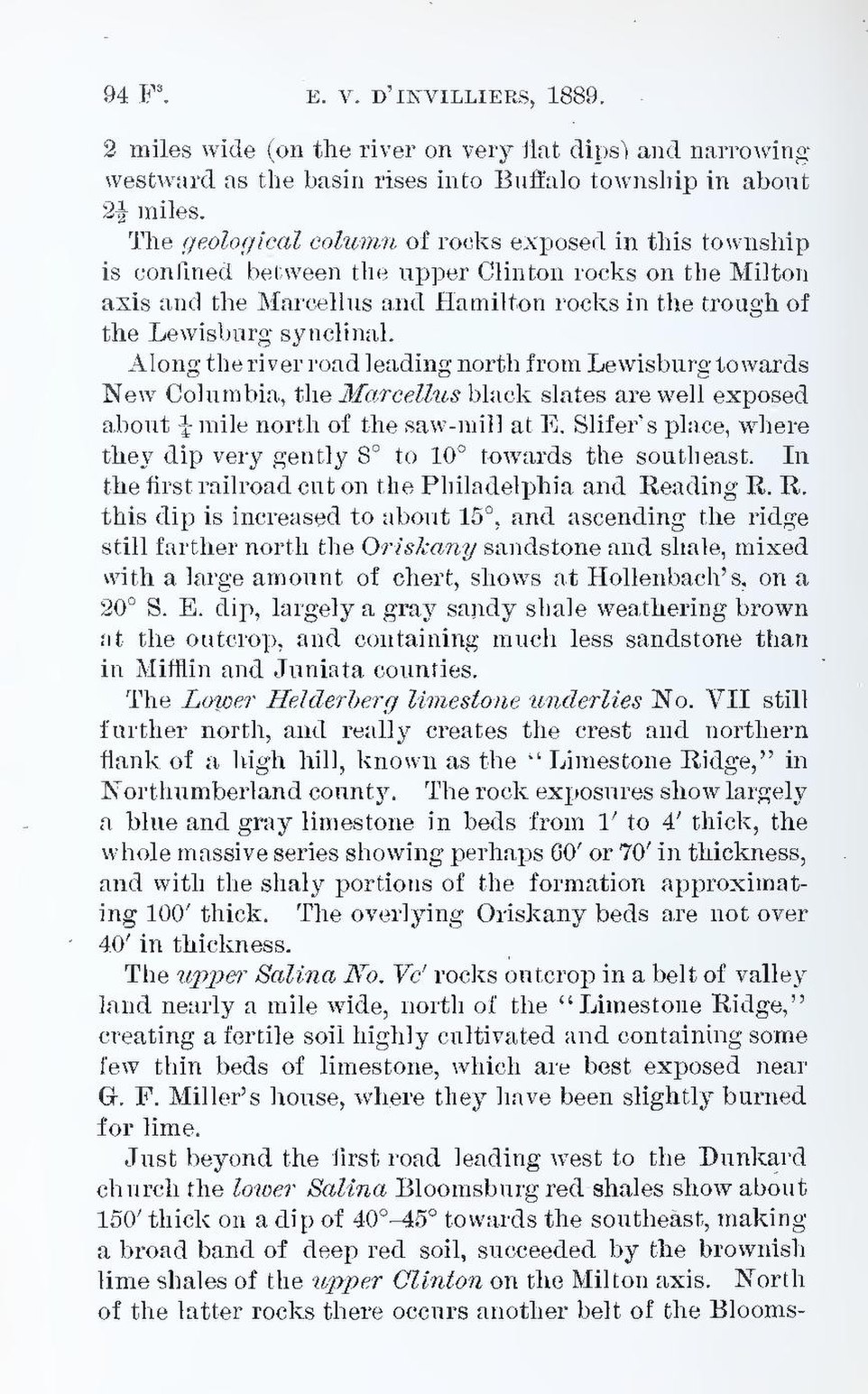2 miles wide (on the river on very flat dips) and narrowing westward as the basin rises into Buffalo township in about 2½ miles.
The geological column of rocks exposed in this township is confined between the upper Clinton rocks on the Milton axis and the Marcellus and Hamilton rocks in the trough of the Lewisburg synclinal.
Along the river road leading north from Lewisburg towards New Columbia, the Marcellus black slates are well exposed about ¼ mile north of the saw-mill at E. Slifer’s place, where they dip very gently 8° to 10° towards the southeast. In the first railroad cut on the Philadelphia and Reading R. R. this dip is increased to about 15°, and ascending the ridge still farther north the Oriskany sandstone and shale, mixed with a large amount of chert, shows at Hollenbach’s, on a 20° S. E. dip, largely a gray sandy shale weathering brown at the outcrop, and containing much less sandstone than in Mifflin and Juniata counties.
The Lower Helderberg limestone underlies No. VII still further north, and really creates the crest and northern flank of a high hill, known as the “Limestone Ridge,” in Northumberland county. The rock exposures show largely a blue and gray limestone in beds from 1′ to 4′ thick, the whole massive series showing perhaps 60′ or 70′ in thickness, and with the shaly portions of the formation approximating 100′ thick. The overlying Oriskany beds are not over 40′ in thickness.
The upper Salina No. Vc′ rocks outcrop in a belt of valley land nearly a mile wide, north of the “Limestone Ridge,” creating a fertile soil highly cultivated and containing some few thin beds of limestone, which are best exposed near G. F. Miller’s house, where they have been slightly burned for lime.
Just beyond the first road leading west to the Dunkard church the lower Salina Bloomsburg red shales show about 150′ thick on a dip of 40°-45° towards the southeast, making a broad band of deep red soil, succeeded by the brownish lime shales of the upper Clinton on the Milton axis. North of the latter rocks there occurs another belt of the Blooms
